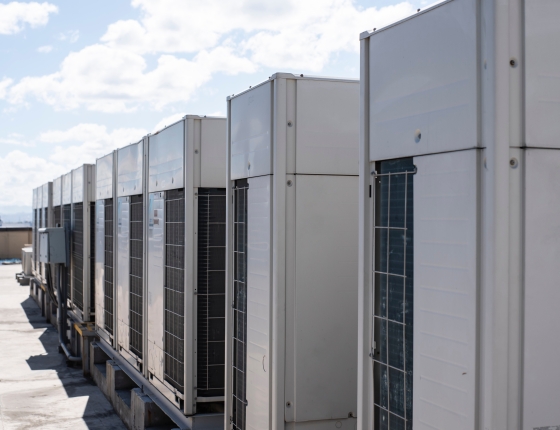One promising solution to make buildings more efficient is the variable refrigerant flow (VRF) system, an all-electric alternative to traditional HVAC systems. VRF systems work by efficiently moving heat throughout a building via refrigerant as opposed to water or air. Buildings that use VRF can reduce carbon emissions and prepare for a clean energy future.
The Minnesota Department of Commerce’s Conservation Applied Research Development (CARD) program has contracted Slipstream, CEE, and LHB to lead its field demonstration of VRF systems in Minnesota. The study seeks to quantify the energy and comfort benefits of VRF systems, particularly in cold climates.
Typical buildings that can benefit from VRF include hotels, multifamily residential buildings, office buildings, and educational institutions, but any commercial building with multiple heating and cooling zones could be an ideal candidate for this technology. The study will identify demonstration sites in Minnesota, including sites that have recently installed a VRF system or are under consideration for an HVAC upgrade.
Project Summary
Objective
- Quantify VRF systems’ energy benefits and their ability to provide adequate heating, particularly in cold climates.
- Provide participants with superior thermal comfort and 30% to 40% energy savings over traditional HVAC systems.
Scope
- Review products and the market.
- Identify building demonstration sites for the study.
- Conduct detailed VRF system characterization audits and interviews regarding operations and comfort.
- Install energy and performance monitoring equipment and collect data over several months at minimum.
- Conduct comfort survey of building occupants.
- Develop recommendations for utility program planning.
Non-energy benefits
- Improved building acoustics.
- Reduced maintenance.
- Marketing opportunity to new occupants.
- Financial incentives.
